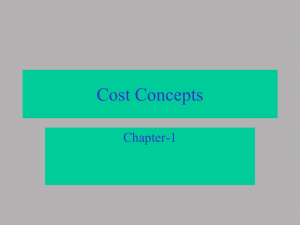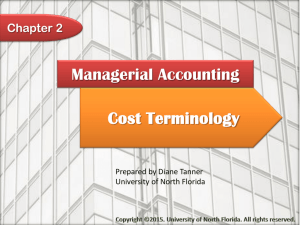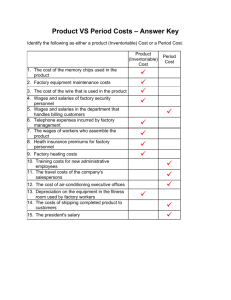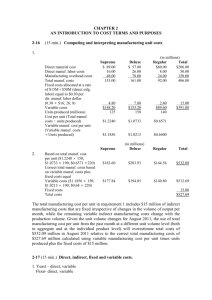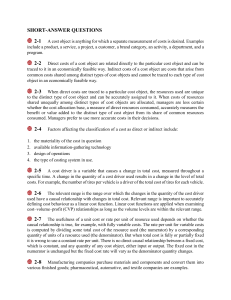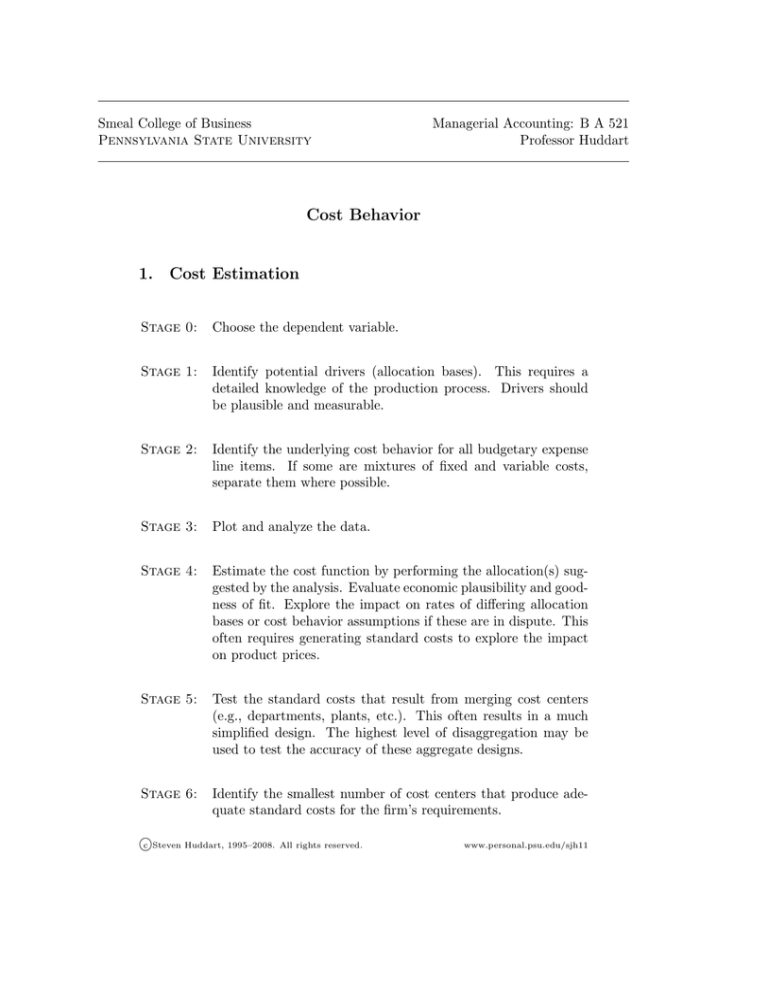
Smeal College of Business
Pennsylvania State University
Managerial Accounting: B A 521
Professor Huddart
Cost Behavior
1.
Cost Estimation
Stage 0:
Choose the dependent variable.
Stage 1:
Identify potential drivers (allocation bases). This requires a
detailed knowledge of the production process. Drivers should
be plausible and measurable.
Stage 2:
Identify the underlying cost behavior for all budgetary expense
line items. If some are mixtures of fixed and variable costs,
separate them where possible.
Stage 3:
Plot and analyze the data.
Stage 4:
Estimate the cost function by performing the allocation(s) suggested by the analysis. Evaluate economic plausibility and goodness of fit. Explore the impact on rates of differing allocation
bases or cost behavior assumptions if these are in dispute. This
often requires generating standard costs to explore the impact
on product prices.
Stage 5:
Test the standard costs that result from merging cost centers
(e.g., departments, plants, etc.). This often results in a much
simplified design. The highest level of disaggregation may be
used to test the accuracy of these aggregate designs.
Stage 6:
Identify the smallest number of cost centers that produce adequate standard costs for the firm’s requirements.
c Steven Huddart, 1995–2008.
All rights reserved.
www.personal.psu.edu/sjh11
B A 521
2.
Cost Behavior
Diagnosing an inadequate cost system
• Are difficult-to-manufacture products cheap to produce?
signal a problem.)
(Yes may
• Are there sensible reasons for differences in margins across products?
(No may signal a problem.)
• Do competitors sell your high margin products? (No may signal a
problem.)
• Is the outcome of bidding predictable? (No may signal a problem.)
• How do customers react to price increases? (Inability to predict reaction
may signal a problem.)
3.
Six Reasons to Group Equipment in One Cost Center
• Proximity
• Immateriality
• Same responsible manager
• Similar cost structure
• Similar function
• Proportionality
4.
Different Ways of Categorizing Costs
4.1
Inventoriable vs. Period
An inventoriable cost is one that is allocated to product as it processed
or manufactured. Inventoriable costs remain on the balance sheet until the
inventory is sold. Period costs are expensed in the period they are incurred.
The classification of a cost may vary according to the purpose for which the
cost report will be used. Cost reports may be prepared for the following
purposes:
• issuing financial statements prepared under US (or foreign) GAAP,
• filing tax returns, and
Page 2
Cost Behavior
B A 521
• determining payments as specified by a procurement contract.
How can cost classifications vary by purpose?
4.2
Variable vs. Fixed
Cost are variable or fixed with respect some driver. The relationship is
empirical. It depends on both the time horizon and the purpose underlying
the analysis.
Give an example of how a cost may fixed or variable depending on the
• time horizon; and
• purpose.
4.3
Direct vs. Indirect
• The treatment of a cost within the accounting system defines whether
a cost is direct or indirect.
Page 3


